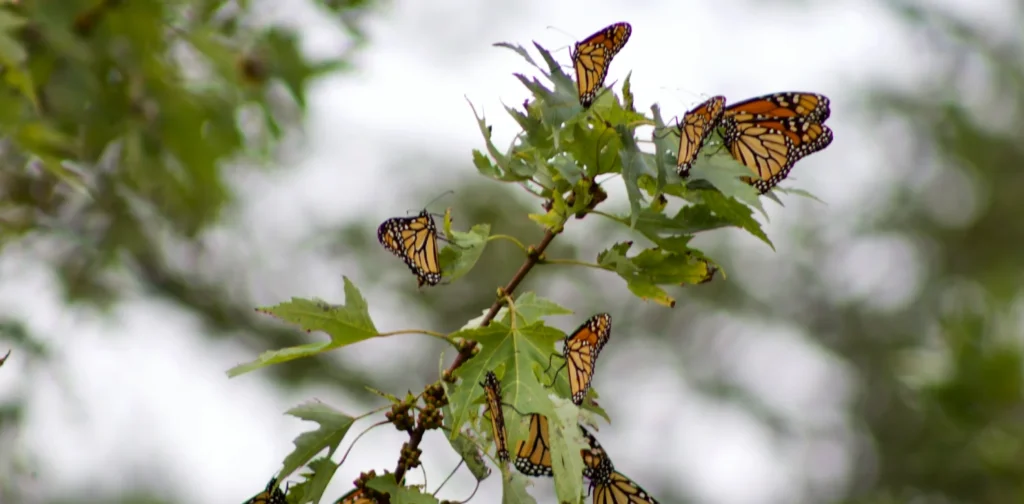Rising Population of the Endangered Monarch Butterflies in Mexico

Photo: Bryon Russell-Oliver on Unsplash.
Every species contributes to supporting the Earth’s ecosystem balance, including monarch butterflies. Despite their critical roles as pollinators, these butterflies have long been endangered. The good news is that the monarch butterfly population has shown a notable increase since the beginning of 2025.
Knowing Monarch Butterflies
Monarch butterflies originate in North and South America. Their population is spread anywhere milkweeds grow, where they can lay eggs and obtain food for baby caterpillars. The yellow and black butterflies are known for their migratory habit, in which they travel up to 4,000 kilometers from the northeast United States and southeast Canada to central Mexico to hibernate between November and mid-March.
Monarch butterflies act as pollinators, which is central to the fertilization process of flowers and other plants. Additionally, monarch butterflies hold cultural significance for Indigenous communities in North America.
Unfortunately, the population is dwindling fast to the point of endangerment. According to the International Union for Conservation of Nature (IUCN), the western monarch population has declined from around 10 million to 1,914 between the 1980s and 2021. Meanwhile, the eastern population declined by 84% from 1996 to 2014. Deforestation due to agriculture and urban development, intensive use of pesticides and herbicides, and climate change have disrupted the butterflies’ habitats, food sources, and migratory patterns.
Population Increase
Fortunately, good news emerged at the beginning of 2025. According to a survey by WWF-Mexico and Mexico’s National Commission of Protected Natural Areas in collaboration with local communities, the eastern monarch butterfly population has risen. It occupied 4.42 acres (around 17,882 square meters) of Mexico’s forests in 2025, compared to 2.22 acres during the previous winter.
Furthermore, forest degradation decreased by 10% at the Monarch Butterfly Biosphere Reserve. The reserve is a UNESCO-designated World Heritage Site that aims to protect key sites where monarch butterflies spend the winter.
“We recognize the key role of local communities, as well as the support of the government of Mexico in conserving the forest and providing this iconic species with the opportunity to thrive,” said Jorge Rickards, the Director General of WWF Mexico. “It’s now time to turn this year’s increase into a lasting trend with an all-hands approach where governments, landowners, conservationists, and citizens continue to safeguard critical habitats along the monarch’s North American migratory route.”
Safeguarding Planetary Health
While improvements are occurring, the overall population of monarch butterflies is still far below the average. Therefore, it is vital to address the contributing issues behind this population loss, such as illegal logging, land use change, and pesticide overuse. After all, safeguarding planetary health includes protecting the health and wellbeing of biodiversity and ecosystems, which will eventually improve our health as well.
Editor: Nazalea Kusuma

Join Green Network Asia Membership
Amidst today’s increasingly complex global challenges, equipping yourself, team, and communities with interdisciplinary and cross-sectoral insights on sustainability-related issues and sustainable development is no longer optional — it is a strategic necessity to stay ahead and stay relevant.
Join Now
Kresentia Madina
Madina is the Assistant Manager for Digital Publications at Green Network Asia. She graduated from Universitas Indonesia with a bachelor's degree in English Literature. She has three years of professional experience working on GNA international digital publications, programs, and partnerships particularly on social and cultural issues.


 Weaving the Thread Between the Last Elephant and the Floods in Sumatra
Weaving the Thread Between the Last Elephant and the Floods in Sumatra  Bringing Buried Rivers Back to Life Through Daylighting
Bringing Buried Rivers Back to Life Through Daylighting  Prescribing Beyond Profit for CEOs’ Anxiety
Prescribing Beyond Profit for CEOs’ Anxiety  An Interview with May Tan-Mullins, CEO and Provost of University of Reading Malaysia
An Interview with May Tan-Mullins, CEO and Provost of University of Reading Malaysia  An Interview with Eu Chin Fen, CEO of Frasers Hospitality
An Interview with Eu Chin Fen, CEO of Frasers Hospitality  The UK Government’s Funding Package Plan to Tackle Youth Unemployment
The UK Government’s Funding Package Plan to Tackle Youth Unemployment